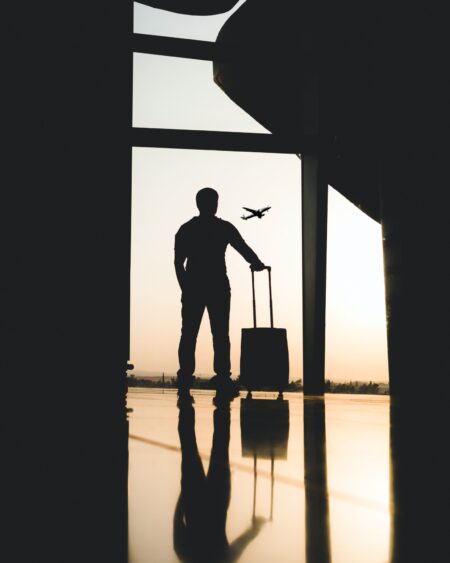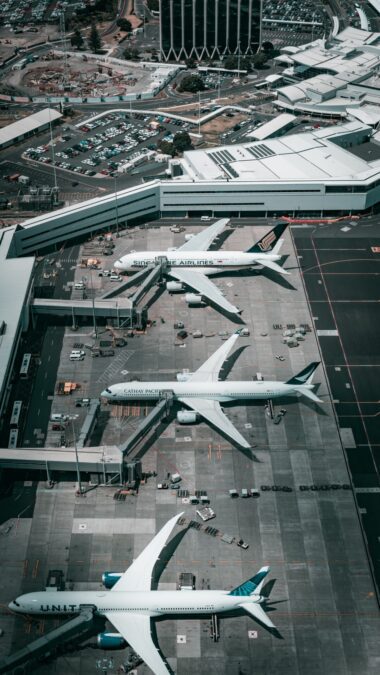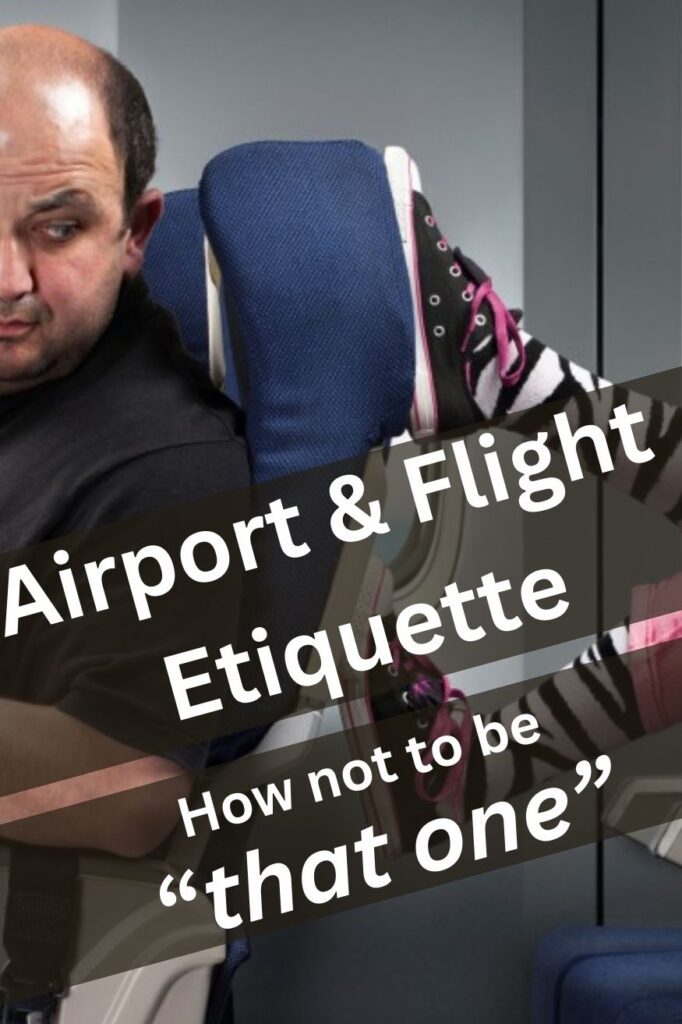OTAs (Online Travel Agencies) have dramatically changed the travel and tourism industries. Together with smartphones, they helped usher in the age where anyone can travel to almost anywhere on the planet without the help of a professional organizing their trip.
It is one of the most competitive markets and these airlines platforms use dynamic pricing, which allows us to hunt for bargains and deals, giving us the ever present feeling that we are in the process of “gaming” the system. But, with countless airlines, travel websites, and various factors that affect flight prices, finding the most affordable ticket can often feel like searching for a needle in a haystack.
Whether you’re planning a dream vacation or simply need to travel for work, knowing how to find the best deals on flights can save you a significant amount of money, and in this guide, I will cover several tips and tricks to keep your wallet safe.
This guide is split into sections corresponding to three traveler profiles.
– The Planner, and frequent flyer: people who know when their holidays will be and book flights in advance. They scour the air travel websites, comparing deals and trying to minimize the cost of future trips. This category also includes frequent flyers and business travelers, as they might have several ways to reduce the cost of the trip. They have airline loyalty programs, travel rewards, access to lounges through travel credit cards, etc.
– The Wanderer, and flexible traveler: people who are not constrained by specific schedules from their work, families, etc., and who can afford to alter their flight times to find the cheapest solution. This may include flying days before or after, depending on when flights are cheaper, stopping in a city for longer layovers, traveling with only a carry-on on one-way tickets and skiplagging through layovers, and those who do not mind flying to secondary airports and then using public transport to get to their destination. Think of it as the backpacker persona: flexible, open to variations in their plans, and, compared to the Planner, basically just winging it.
– The Travel hacker, and overoptimizer: people for whom this search for the optimal flight ticket is of utmost importance, and “gaming” the system becomes almost a mission. They will lurk on travel websites waiting to snatch error fares and use VPNs to access deals in local currencies. They use more advanced flight search tools as opposed to standard user-friendly OTA websites to find a convenient open-jaw route or even the elusive fuel dump. Generally, they are open to any sort of inconvenience as long as they can reduce the price.
Several recommendations are assigned to a specific category but that can be used by anyone (such as booking directly with the airlines or leveraging hacker fares).
Others, on the other hand, like open jaw flights or fuel dumping mechanisms, are definitely advanced or simply not for everyone. Also note that generally, the recommendations are sorted from totally obvious and easy to do to more obscure and hard to achieve.
The Planner’s repertoire
Most people, with their families, jobs, and everyday routines, are planners. Because it is rare for them to just pack things and leave, this allows ample time to prepare for a trip and try to find the best flights and accommodations.
Compare different OTAs
This is pretty standard practice for most people and is almost an enjoyable window-shopping experience. Because it is one of the most highly competitive markets there is and because of the dynamic pricing behavior, different OTAs will return different results and prices for a particular route. Some might show routes that don’t appear on other platforms or offer specific deals.
Therefore, it is always a good idea to check different OTA websites and compare their results.
There are a slew of OTAs, some specific to flights, others more broad, covering also hotel accommodations or car rentals. The most popular websites (in no particular order) are:
- Skyscanner
- WayAway
- Kiwi
- Booking.com
- Agoda
- Expedia
- CheapAir
- KAYAK
- Lastminute.com
- Google Flights
- and many, many more…
Use airline rewards programs
The common Frequent Flyer programs are loyalty programs offered by airlines that provide awards for the accumulation of points (or figurative miles). Miles can then be converted into several rewards, ranging from seat upgrades, priority boarding, access to airport lounges, and ultimately free airplane tickets.
Loyalty programs can be opened with single airlines or airline alliances such as Star Alliance, which is the largest group with the most airline members.
Miles can be accrued not just from purchasing tickets and flying but also from the airlines’ shopping portals, which often have high multipliers of points.
While not specifically related to airlines, generic shopping portals also offer many deals, often related to cashback rewards. Evreward for example, is a popular directory of shopping portals and has a specific page related to travel sales.
Book in advance
Although airlines always surprise us with last-minute deals, the simplest and most reliable way to score a cheap ticket is to book well in advance.
Cheapair publishes yearly aggregates of averages on when it is best to buy tickets. You can find this year’s averages for international flights here and for domestic flights here. As can be seen from these links, for some regions, such as Europe, booking two months in advance will get you the best fares. Other places, such as Asia, are best booked three times earlier, so six months.
Check for deals and error fares
Flight deals are easy and are simply based on luck and waiting for an opportunity. There are a slew of websites that offer travel deals. First of all, the OTAs themselves, once you create an account on their platforms. Other useful resources that help keep track of these travel deals are:
- Secret Flying
- Fly4free
- TravelPirates
- The Flight Deal
- or Facebook groups and pages such as Cheap Flight Labs
There are also several websites that are free subscription-based and that routinely send you notifications of interesting flight deals, such as
- Dollar Flight Club
- or Going (formerly Scott’s Cheap Flights).
On these platforms, you may occasionally encounter ridiculously underpriced flights. These are error fares and are simply tickets incorrectly priced because of a software bug or a wrong manual input. Since they are so obvious, they are often patched quickly, and sometimes they might not even be granted by the airline once they are discovered. Because they are quickly fixed, error fares should be booked immediately once you find one, since by their nature they are visible mistakes that are taken advantage of by everyone who sees them.
Find credit cards with travel benefits
Much like frequent flyer programs, several banks and credit card companies offer travel rewards. Many of these include access to airport lounges, and some cards offer cashback on travel-specific purchases, as well as generous signup bonuses in terms of credits that can be spent on travel-related bookings.
When it comes to travel cards, the undisputed best are the Chase Sapphire Preferred and Chase Sapphire Reserve, because of their generous signup credits and travel points multipliers. The AMEX platinum is also a solid choice, especially for non-US citizens, for its premium benefits and global access to lounges.
I am not recommending the following, and everyone should do their own research and be aware of the terms and conditions of credit card subscriptions, but “playing around” with credit cards can also reap generous rewards. Techniques such as credit card churning (opening multiple cards for the sole purpose of getting signup bonuses and rewards) or accruing points through manufactured spending (such as buying virtual gift cards and converting them into cash or purchasing high-demand products like event tickets or electronics with the intent of reselling them) can be lucrative side hustles.
Without going into these more “extreme” cases, a simple way is to cancel the card at the end of the year once the fee has been paid and reopen it a year later, gaining the signup bonuses again. Many cards do not have limitations on this, and it is not considered that bad if done in a conservative way (i.e., not in bulk with many cards and frequently). Again, beware of the impacts on your credit score if you want to consider this route.
Book directly with airlines
Most of us use OTAs for their aggregating benefits of finding multiple airlines, but often, booking directly on an airline’s website turns out to be cheaper. There are also no additional management fees in the event of cancellation. This ties well with other points on budget airlines and booking in local currencies.
Use budget airlines
Sometimes these airlines are not even listed as options on OTAs, yet they offer exactly the same flights as other major or more well-known airlines. Budget airlines flying from a specific region can be easily found with a Google search or in this Wikipedia article listing all low-cost airlines. Just book the flights through that airline’s website.
Safety concerns are unfounded since safety measures and airplanes remain the same. Usually, there are just fewer amenities (and probably much higher fares for onboard drinks and snacks or penalties for overweight luggage)
Get hacker fares
Hacker fares are a common way to reduce the costs of round-trip tickets and are based on mixing airlines between the outgoing and return trips, effectively buying two one-way tickets. Many OTAs do this already when they offer their aggregated results, but you can do this yourself, especially if you mix it with the point of looking for smaller budget airlines that might not show up in the OTAs results. You can also mix carriers between layovers.
A common hacker fare is to find the hub city that has low prices for international flights and book the domestic flight there separately instead of booking them together, which is usually more expensive.
The downside of hacker fares is that every ticket is a standalone, separate purchase, so, for example, in the case of layovers, you will need to pass through security again, recheck your bags, and generally do all the transfers yourself. You also need to account for possible airline delays that could make you miss your connection since the airline will not refund them (although some OTAs such as Kiwi offer paid insurance protection for these situations)
Play around with round-trip or one-way
As mentioned previously, hacker fares often allow one to find cheaper combinations of flights. Be sure to check budget airlines separately, as these might not show up on OTAs result pages.
However, the opposite is also true many times because airlines have triggers that create deals (after all they want to ensure their plane is full on return as well), so often a round-trip ticket with a stay of one week will be cheaper than two one-way tickets.
In some rare cases, a round-trip ticket can be cheaper than a single one-way ticket, allowing you to throw away the return ticket and still get a better deal even if you did not plan on flying back.
The Wanderer’s toolbox
This is the category I fall into. I will book flights only a few days or at most weeks before, but then try to optimize spending. This leads to a wonderful serendipitous approach where I may find myself on a long layover in a country I would have never thought of stopping in, then renting a car and driving to another city because I found a good fare for an airplane departing from there.
Choose the low days
It is often cheaper to fly on Tuesdays and Wednesdays to city destinations, which are popular with business travelers. In fact, Google published a study, revealing that it’s 12% cheaper to fly in the middle of the week than on weekends. The same can be said for highly touristic destinations, where most visitors will not want to break their weekend stay, so flying on Saturdays will give you a better deal.
Most OTAs have a grid view of days or offer an option to search for variable dates, showing the prices +2, -2 days. If you’re flexible with the dates, this is one of the best ways to find a cheaper ticket.
Search for inconvenient times
Similarly to the above, early morning flights or overnight flights are usually cheaper than the more comfortable and, clearly, more popular flights at better times.
In some cases, the apparently bad-timed flight may even be a better choice, for example, for long international flights that can cause a lot of jet lag.
Find major airport hub cities
Large cities have strong international airports with hundreds of flights. This leads to heavy competition and cheap prices.
Although this is not always the case, it’s easy to find which major airports fly to a destination by simply inputting in a flight search box your destination as the departure and searching for flights to ‘anywhere’ from there (most OTAs allow this kind of serendipity approach). You will then see all destinations, and you can pick the most busy airports and flip the search around. In most cases, you will find the same outgoing flight, and more often than not, the cheapest ones are from those common (and actually well-known) major hub airports such as LAX, Singapore, Frankfurt, London, Singapore, etc.
An example of this would be Vietnam, which is close to Japan, but chances are that a flight from Singapore or Shanghai to Tokyo will end up being cheaper despite being further away. By searching “Tokyo to anywhere” you will find all these major connections.
Play around with multi-city searches
As mentioned above, pure distance is not always the best metric to predict what the prices might be. If flying to multiple destinations, play around with the order of the flights, since flying to one place first may turn out cheaper even if it doesn’t make much sense logically and can seem counterintuitive from the point of view of neat progression following a direction.
Leverage layovers
Another statistic that comes as no surprise is that layovers are 20% cheaper than direct flights. Nobody likes to wait for hours in an airport, but sometimes a long layover might be a good thing. This is actually one of my favorite things when coupled with the point above on multi-city travel.
Instead of waiting at the airport, you can go out and visit the city. Usually, flights are routinely scheduled, so for example, a layover of 6 hours can easily be changed to 1 or 2 days plus 6 hours. If you contact the airline, changing the ticket is usually free of charge, and you can squeeze in a nice visit to a major city.
Just be aware of any visas you might need at this stop when you exit the airport.
Consider skiplagging
The “hidden-city” fare, also known as skiplagging, is taking advantage of layovers in the most extreme way by knowing the hub cities of specific airlines and using them as layovers instead of final destinations.
All airlines have one or multiple hub cities, and ticket prices are usually higher if flying to the hub city as an end destination. If that is your destination, it is often the case that there will be a cheaper flight to somewhere else with a layover in that hub city.
So instead of booking a flight to the hub city destination, pick one that has a layover there. Then, once you land, ignore the layover, throw away the ticket for the next leg, and get out of the airport.
Skiplagging is perfectly legal, but airlines don’t like it since you’re “gaming” the system. It’s important to note that you can do this only with hand and carry-on luggage, as any checked bags will be sent to your final destination. Also, this can only be done with 1-way tickets and for the final flight, since once you miss a flight connection, the entire booking is canceled. Finally, don’t notify the airline of what you’re doing, as they might cancel any frequent flyer points you would get.
A useful resource for this is skiplagged which shows all the travel destinations that are cheaper using this method instead of a traditional starting point/arrival point route.
The Travel Hacker’s arsenal
This is where the hunt for a bargain can quickly lead to an optimization obsession. They require more knowledge and, most of all, more patience, in order to find that elusive ultimate travel hack.
Evaluate Open Jaw flights
Open Jaw flights are round-trip tickets where you depart from one airport and then return from another (or vice-versa). An example would be London to Delhi, and then Mumbai to London, which would be a destination open jaw. Origin open jaw, as expected, would be London to Delhi, and then Delhi to Paris. The double open jaw would be when both origin and destination are to different airports.
Open jaw flights can save considerable amounts of money, especially when coupled with short domestic flights or land transport as discussed further.
These flights can be found in the “multicity” search options on OTAs such as Kiwi or Kayak.
Consider land transport
When booking open jaw flights or flights to secondary airports, considering other modes of transport might also be a good way to save money. You can book a flight to an airport near your intended destination and then travel by train, buses, and other means that can get you to your destination at a cheap price and acceptable comfort.
For this, websites such as rome2rio are great for aggregating all available transport between two destinations and showing their respective costs.
For the Wanderer travel types, you could also rent a car and make it a road trip (which is my personal preference).
Look for secondary airports
Related to the above, budget airlines usually fly to secondary airports because of fewer taxes and lower landing fees. By definition, these airports are secondary and further away from the city, but some are well connected making it worthwhile. Check out this Wikipedia article listing all commercial airports of cities including the more obscure ones.
Leverage local currencies
Many times, airline websites have cheaper fares in the local currency than in the international version of the site (and on OTAs, you can usually switch this with a button). By booking in the local currency with credit cards that do not charge an exchange rate you can get the same ticket at a lower price. This is also related to the next point on VPN and location-based searches.
Use a VPN on OTAs and airline sites
As mentioned in the introduction, airline websites and OTAs use dynamic pricing. Sometimes prices can vary significantly if viewed from different cities (or even different districts within the same city). This is due to income data analysis on the living cost of an area. To counter this, use a VPN (virtual private network) to mask your location and appear to be searching from another country. Countries such as Malaysia, Sweden, and Romania are known for offering cheaper flights.
Incognito or private browsing is also useful here, as it removes tracking cookies from websites that might be used to profile your search behavior, even across different websites, and determine that you are indeed very interested in a particular flight, adjusting prices accordingly. While there is no concrete evidence on this last point on cookies, safe and private browsing habits are a good practice in general, so it doesn’t hurt. Be sure to check out this article for more cybersecurity tips for travelers and digital nomads.
Use the ITA Matrix
While a lot of the original functionality of the ITA Matrix has been integrated into Google Flights after Google’s acquisition of ITA software, it still remains the most powerful flight search tool. You can find articles with in-depth tutorials on how to use the ITA matrix here at upgradepoints.
ITA is not a booking engine, but the results can be extracted and uploaded into bookwithmatrix.
The ITA matrix is a useful tool to see the breakdown of a flight and see how much of the total ticket price is base fare and added fuel surcharges.
Since 2004, when oil prices were high, airlines have started adding a fuel surcharge to their base fare tickets. Through the years, this additional tax has never been regulated by the government and is basically not tied in any way to the current price of oil. In fact, every airline has its own fuel surcharge, which might be wildly different from each other. In other words, it is completely discretionary for the airline. Check out this article from UpgradePoints for in-depth information and a list of the best and worst airlines in terms of fuel surcharges.
The infamous 3X fuel dump
I saved this for last as it is the holy grail of flight optimization. As mentioned previously, fuel surcharges can rack up the price of flight tickets considerably, but these can removed with “creative” and obscure methods of fuel dumping.
A fuel dump means taking advantage of a “bug” in the revenue collection system between airlines. When fares involving several airlines are automatically priced and ticketed, a single airline is responsible for collecting the revenue and then sharing it with the other airline participants. Because of differences and errors, the airline collecting the money might ignore the fuel surcharge for a trip, eliminating and dumping the surcharges on all other flights.
The 3x fuel dump takes advantage of this by including a fuel dumping ticket as the third final ticket after the outgoing and return trip tickets. This ticket is the “third strike” – the flight that will never be taken and used only to remove the fuel surcharge.
3x is the most common and “old way” to fuel dump. Other techniques can be 1x: booking the first flight that you actually take, only to reap the rewards of the dumping on your final flight, or 5x fuel dumps which include two round trips, plus the final throwaway flight at the end. And there can be several other combinations.
It is a commonly known technique, although hard to achieve. Instances of this issue are kept secret by those who find such “deals” of these elusive final trips because if it is known and abused by many people, the issue gets quickly patched.
If you’re into it, check out this article from travelcodex and then be prepared for a lot of research, primarily in breaking the initial coded language that is used on the forums. Also, respect the secrecy and somewhat elitist environment that exists around fuel dumps discussions and forums, and don’t reveal information when it is clearly intended to remain hidden.
In any case, never contact the airline, asking for upgrades, changes, refunds, or whatever. The whole point is that the automated ticketing system is being taken advantage of, and if an agent’s attention is attracted to a particular route, they will quickly see the mistake. This will lead to fixing the mistake for your flight but also sharing the information internally and that error will quickly be patched. Don’t ruin it for everybody.
Generally speaking, to achieve a 3x fuel dump, an OTA is necessary in the first place, since you would be leveraging different airlines that are not in the same alliance. The objective is to look for good “candidate flights” (known as YQ or YR) that have a ridiculously high fuel surcharge, something between half and 3/4 of the total flight cost.
YQ flights are easy to find on the ITA matrix site and are often even publicly revealed as being good candidates. The 3x flight which allows achieving the fuel dump is instead kept secret or spoken about in code by those who find it for the reasons mentioned above of not “ruining it for everybody”. As a hint, just note that the third flight doesn’t need to be related to the original destination of your return flight. It can be totally on the other side of the world.
Fuel dumps require extensive research and a lot of trial and error and are the ultimate optimization mayhem. The one that makes you lose your mind while you try to go inside the matrix. But if you ever do find one, you have also found the ultimate travel hack.










